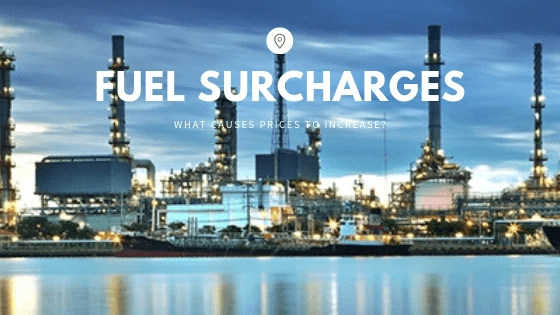

A fuel surcharge is a way of adjusting the amount paid to move freight by considering significant variation in fuel prices, compared to historical data. Fuel has a major impact on the supply chain and as a trucking company, we must be cognizant of what the oil industry market is doing and how it is going to affect the cost of diesel. There are four main components that contribute to the retail price of a gallon of diesel fuel:
Crude oil prices are the biggest factor affecting the retail price of diesel, while the supply and demand of crude oil is what really drives these prices. Transportation fuel in the United States is generally more volatile than other commodity prices. Petroleum products are another factor in these prices.
Factors such as low volumes of imports or problems at the refinery decrease the petroleum supply, which then decreases inventory levels/stocks of this petroleum. With stocks declining, wholesalers and marketers will most likely bid higher for these low levels of supplies to ensure that they do not run short on fuel. If inventory levels are low, it is very difficult to support the flow of supplies from one region to the next very quickly, so this increases the retail price of a gallon of fuel. This is the reason that fuel prices fluctuate as often as they do.
Almost half of U.S. diesel fuel production occurs near the Gulf of Mexico, so the farther away from the source of supply, the more expensive the price will be considering higher transportation costs.
Never Miss a Blog, Send Them to My Email!
Diesel fuel prices in California and on the West Coast are considerably higher than in other regions of the country due to much higher taxes (California) and other supply issues.
According to the U.S. Energy Information Administration (EIA), at the beginning of 2018, state taxes on retail, on-highway diesel fuel in California totaled 63.16 cents/gallon, and the average of total state taxes for all 50 states was 29.33 cents per gallon. This is a significant price difference in fuel by just doing business in California and can be very costly. We don’t usually think about all these issues when complaining how high prices are for fuel, but there are many different factors that affect the supply chain.
Percentage of fuel cost break down for crude oil, refining, distribution, and taxes for regular gasoline and diesel in August 201
Natural disasters also have a major impact on fuel prices through supply chain disruptions. When a natural disaster, say a hurricane, strikes the Gulf Coast, it makes it very difficult for companies to ship their products from point A to point B. This drastically reduces the supply of fuel in other areas, which forces price increases so that providers can keep their business running while they wait for new shipments that have been halted due to different circumstances from the natural disaster. Several refineries in the Gulf Coast have been forced to shut down in anticipation of major hurricanes. This means that there is less supply with the same amount of demand, and this forces prices to rise.
Another big event that has impacted fuel prices in the past, is the BP oil spill in 2010. Events like this do not happen often, but when they do, they have a major impact on the gasoline supply chain. It is simple economics (supply and demand) as to why prices increased due to this event with the supply of crude oil taking a brief hit.
It is very important for us to have a fuel surcharge when quoting prices for our customers to protect our bottom line from spikes in fuel prices. Prices are constantly changing with the economy and other factors listed above, so it is crucial for us to monitor the crude oil industry.
Download “7 Questions to Ask when Selecting a Freight Partner”